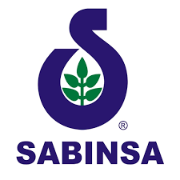News
Could new research heat up the turmeric market?
24 Jun 2019Sales of turmeric – and the curcumin extracted from it – have soared over the past few years, and new research suggesting it could help relieve pain from knee osteoarthritis looks set to boost the ingredient even further.
According to a recent study published in the journal Trials, supplementation with 500 mg of curcumin three times a day could be just as effective in relieving knee pain in osteoarthritis as 50 g of Voltaren (diclofenac) taken twice a day, a commonly available treatment. In addition, the curcumin group suffered fewer side effects over the 28-day trial, such as flatulence and heartburn. The trial involved 139 patients with knee osteoarthritis, and used curcumin from Indian supplier Arjuna.

According to Innova Market Insights, the number of new products containing turmeric grew an average of 9% a year from 2013 to 2017. Joint health claims were the fastest growing in food and drink launches with curcumin as an ingredient, up 82% a year from 2013 to 2017, followed by sport recovery (up 51%) and immune health claims (up 48%). With this existing consumer interest in the potential of curcumin for joint health, positive results for osteoarthritic patients look particularly promising from a manufacturer’s perspective.
The ingredient already occurs in a wide range of delivery formats, including supplements, functional foods, beverages and cosmetics. Hot drinks is the fastest growing category in food and drink, with 47% annual average growth, followed by soft drinks with an average 27% increase, according to Innova. And while most European imports of turmeric are still ground for culinary use, the supplements market is now the fastest-growing segment of the global curcuminoid market.
Turmeric contains only about 3% curcumin and other curcuminoids, which are the components thought to be responsible for its purported health benefits. However, the terms ‘turmeric’ and ‘curcumin’ are often used interchangeably. Other suggested health effects of curcumin include benefits for digestive health, skin, joints, liver, and nervous system.
Most commercially available extracts are sold with a standardised curcuminoid content of 95%, as suppliers tend to focus on purity, but some go a step further. Indena and Sabinsa, for instance, both aim to improve the bioavailability of active components. Indena uses dietary phospholipids to increase absorption of its curcuminoid ingredient, while Sabinsa supplies an ingredient standardised to 95% tetrahydrocurcuminoids, the ultimate metabolites of curcuminoids in the body.
Interest in turmeric surged at the beginning of 2017, when turmeric lattes and ‘golden milk’ drinks started to appear in many coffee shops. But Google searches spiked at the beginning of 2019 to reach a new all-time high, suggesting there may be room for further market growth. As new research continues to explore the potential benefits of curcumin, the ingredient looks set to claim a larger slice of the growing functional foods market.


